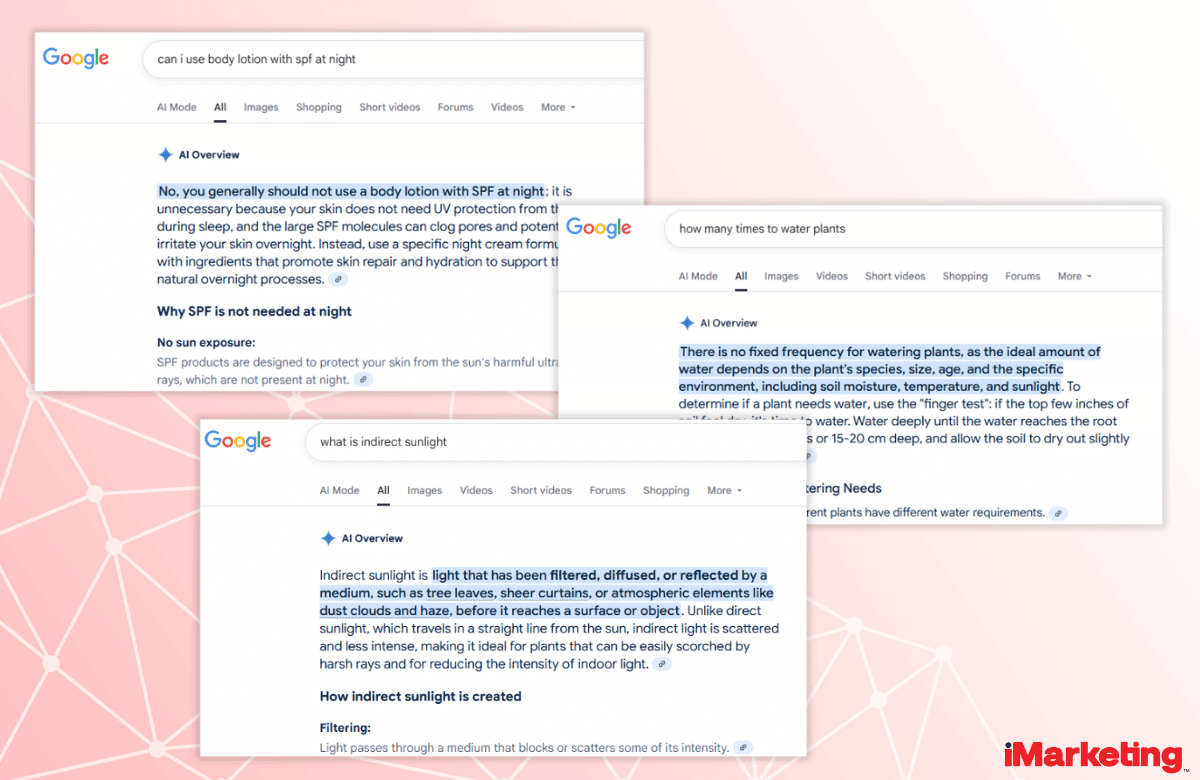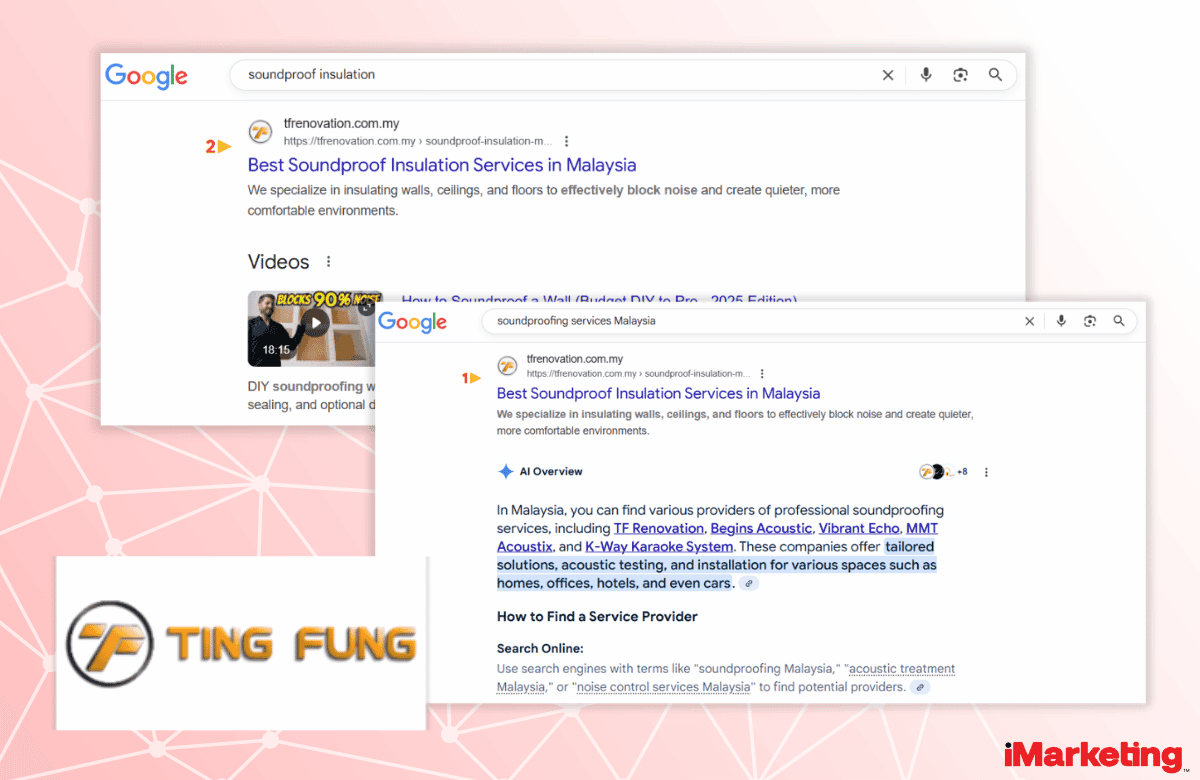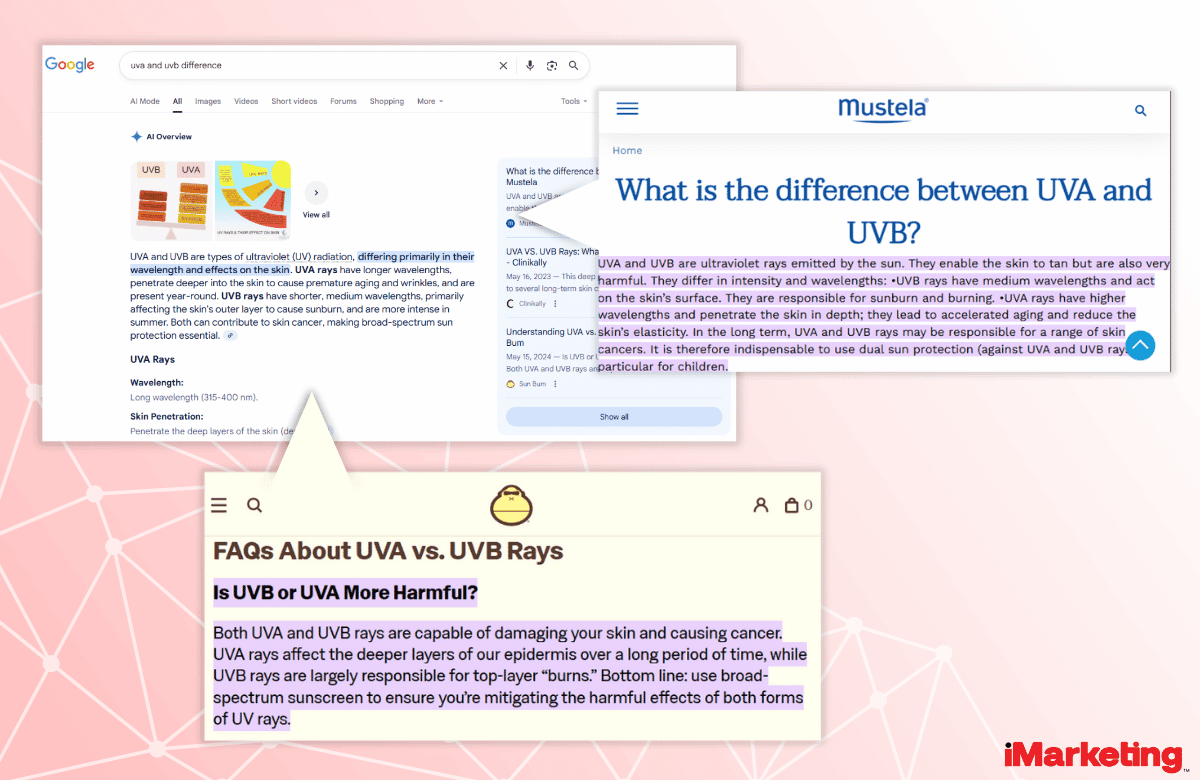In the ever-evolving world of digital marketing, the shift from traditional SEO to more advanced, AI-driven approaches is becoming increasingly evident. Enter Generative Engine Optimisation (GEO), the next frontier in search engine optimisation that is poised to redefine how we optimise content for search engines. GEO goes beyond conventional keyword-based tactics. It focuses on creating content tailored to meet the needs of AI-powered search engines, such as ChatGPT and Google’s AI Overviews. Unlike traditional SEO, AI SEO prioritises content that answers real user questions, not just keyword matches.
As artificial intelligence continues to dominate the way we search and interact with online content, understanding and adapting to these intelligent systems will be critical for maintaining visibility and success in the digital landscape. In this article, we’ll explore what GEO is, why it’s vital for the future of SEO, and how businesses can leverage it to stay ahead of the curve.
What is Generative Engine Optimization (GEO)?

Generative Engine Optimization (GEO) is a content strategy designed for AI-driven search engines, such as Google’s AI Overviews and ChatGPT. Unlike traditional SEO, which focuses on keyword placement and backlinks, GEO emphasizes meaning, clarity, and depth. Its goal is to make content more discoverable, contextually relevant, and aligned with user intent, ensuring AI algorithms can easily interpret and rank it.
The core of GEO lies in understanding that modern search engines powered by artificial intelligence are no longer just looking for exact keyword matches or page structure. Instead, these algorithms are designed to understand the context, intent, and nuances behind a query. For example, when a user types a question into a search engine or engages with an AI chatbot, the search engine doesn’t just serve content with exact keyword matches. Instead, it evaluates the overall relevance of the content, the depth of information, and how well it answers the user’s underlying question or intent.
GEO integrates this new approach into content strategies by considering the words being used in the larger context in which those words are placed. It requires businesses and marketers to shift focus toward creating content that is contextually rich, conversational, and directly addresses user intent more naturally. This includes optimising for long-tail keywords, semantic search, and natural language processing (NLP), all critical factors that AI-powered systems like Google and ChatGPT rely on to provide users with more accurate and insightful answers.
The Role of AI SEO in Optimizing Content for AI Search Engines
AI SEO is reshaping how content is optimised as platforms like Google’s AI Overviews and ChatGPT gain prominence. Instead of focusing only on keyword density and backlinks, AI SEO leverages artificial intelligence and machine learning to help content align with how modern algorithms interpret meaning, context, and user intent. While traditional tactics still matter, AI SEO builds on them by emphasising semantic search, natural language, and relevance, ensuring content is both discoverable by search engines and genuinely useful to users.
One of the key elements of AI SEO is its ability to analyse vast amounts of data using machine learning algorithms. These algorithms help identify patterns in user behavior, understand intent, and predict what kind of content will resonate with audiences. AI SEO tools are designed to assist in structuring content in a way that is optimised for AI-powered search engines. This includes generating topics, writing in a conversational tone, and ensuring content relevance to search queries, all based on insights drawn from user behavior and search patterns. By automating much of the analysis and content adjustments, AI SEO makes it easier to produce content that is tailored to the way AI systems interpret and rank it.
The Importance of Semantic Search and Contextual Keywords
A critical aspect of AI SEO is the integration of semantic search and contextual keywords into content strategies. Unlike traditional keyword optimisation, which focuses primarily on individual keyword usage, semantic search looks at the meaning behind words and phrases. AI-driven search engines prioritise content that offers rich context and answers the underlying questions behind a user’s query. This means that content optimised with contextual keywords and semantically relevant terms is more likely to rank higher, as AI algorithms are better able to understand and evaluate its relevance.
For example, if a user searches for “how to grow organic chillies,” AI search engines will look for content that includes the keywords “grow,” “organic,” and “chillies.” they will also evaluate the content’s depth, quality, and the broader context of organic gardening. AI SEO tools can help content creators include related terms and natural language phrases that reflect how users ask questions or express intent. By doing so, the content becomes more likely to be considered relevant by AI algorithms, which leads to higher rankings in search results.
How GEO Enhances Content Visibility and Relevance in AI Search Engines
Optimising Content for AI’s Understanding of User Intent

One of the main ways GEO enhances content visibility is by focusing on AI’s ability to interpret user intent. Traditional SEO often relied on keyword optimisation to drive visibility in search engine results. However, with the rise of AI search engines, the focus has shifted from the number of keyword matches to the quality and relevance of the content based on what users are truly searching for. GEO goes beyond simply matching keywords to a search query; it seeks to understand the underlying question or need behind the search.
For example, if a user types in “best smartphones for photography,” an AI-driven search engine will analyse the occurrence of the keywords and how well the content addresses the user’s specific intent, recommendations for smartphones with excellent cameras, comparisons, reviews, or even tutorials on photography features. GEO enhances content by creating in-depth, contextually relevant material that answers these nuanced user queries, ensuring that content aligns with the AI search engine’s deeper understanding of what a user is truly looking for.
Leveraging Structured Data, Semantic Tagging, and Contextual Metadata
In addition to focusing on relevance and intent, GEO optimises content for AI search engines by using structured data, semantic tagging, and contextual metadata. These techniques make content more “AI-readable,” helping search engines interpret, index, and rank it effectively.
- Structured Data: This refers to organising content in a way that is easily understood by AI algorithms. By using markup languages like schema.org, content creators can structure their data in a consistent format, providing search engines with clear, organised information. For instance, a recipe website use structured data to indicate the ingredients, cooking time, and preparation instructions, making it easier for AI algorithms to present this information in relevant search results.
- Semantic Tagging: Semantic tags involve labeling elements of content in a way that reflects their meaning, not just their keywords. This helps AI search engines understand the relationships between concepts. For example, tagging a blog post about fitness with terms like “workout,” “strength training,” and “cardio” allows the AI to recognise that these topics are related, even if they aren’t directly mentioned in the same sentence or paragraph.
- Contextual Metadata: Metadata provides additional context about the content, such as the author, publication date, or target audience. By incorporating relevant metadata, GEO helps AI algorithms better understand the overall context and scope of content. This becomes especially important for content that may not directly answer a search query but offers valuable supplementary information, like blog posts or whitepapers.
The Impact of AI on Traditional SEO and Digital Marketing Strategies
For years, traditional SEO focused heavily on keyword density, backlinks, and technical elements like page load speed and metadata. Marketers would target specific keywords, ensuring they appeared frequently throughout their content to rank higher in search engine results. While these methods were effective to an extent, they were often disconnected from the deeper user needs driving the search query. As AI technologies began to take center stage in search engines, the focus shifted toward delivering results that truly match user intent and content context, rather than simply matching keywords.
With AI’s ability to understand the nuances of language and context, it’s no longer enough to stuff content with targeted keywords simply. AI-driven algorithms prioritise content that answers the underlying intent behind a search query, providing users with results that are both relevant and comprehensive. This shift has made content strategies evolve, as businesses must now focus on delivering meaningful and contextually rich content that resonates with users’ needs and questions.
How AI SEO and Generative Engine Optimization are Reshaping Digital Marketing
AI SEO and Generative Engine Optimisation (GEO) are playing pivotal roles in reshaping how businesses approach digital marketing. These techniques go beyond traditional SEO methods by leveraging AI’s capabilities to understand language, context, and user behavior. Rather than focusing solely on optimising for search engine algorithms, AI SEO strategies aim to create content that is specifically designed to meet the expectations of AI-powered search engines, which emphasise relevance, clarity, and depth over mere keyword optimisation.
For instance, GEO emphasises creating content that fits the semantic understanding of AI systems. Instead of just using isolated keywords, GEO encourages businesses to use long-tail keywords, natural language, and conversational tones that AI engines can better interpret. This approach makes it more likely that content will rank higher by offering a more contextually relevant answer to the user’s query.
Moreover, AI-driven methods encourage the use of structured data, semantic tagging, and contextual metadata, helping search engines interpret content more accurately. These methods enable AI systems to understand the relationships between concepts better, making it easier for them to rank content based on its relevance and intent.
Adapting Content to Fit AI-Driven Search Engines
As AI-driven search engines become more advanced, businesses and digital marketers must adapt their content strategies accordingly. This means shifting from keyword-centric approaches to a more holistic view of content, focusing on creating user-centric, relevant, and contextual material that aligns with AI’s understanding of language and user intent. By optimising for AI’s capabilities, content creators can ensure that their material not only ranks higher but also provides value to users in a way that aligns with the demands of intelligent search engines.
Examples of Generative Engine Optimization in Action
Generative Engine Optimization (GEO) is rapidly becoming a key strategy for businesses looking to gain visibility in AI-driven search engines. As more and more AI-powered search platforms like Google’s AI Overviews and ChatGPT dominate the search landscape, businesses are realizing the need to adapt their content strategies to ensure higher rankings. Here are some examples of companies successfully implementing GEO strategies to improve their visibility:
1. Monash University Malaysia (Higher Education)

Monash University Malaysia is an excellent example of leveraging GEO to boost its presence in AI-driven search results, particularly in competitive academic fields. By optimising their program descriptions, such as courses related to electrical and electronic engineering, and pharmaceutical science, they’ve ensured that their content aligns with how AI systems interpret search queries. Through the integration of contextual keywords and semantic tagging, Monash’s programs are more likely to rank higher in AI-powered overviews, making it easier for students to find relevant programs. The focus on intent-driven content that answers prospective students’ questions directly has made their offerings stand out in AI-driven searches.
2. TF Renovation (Soundproof Insulation Services)

TF Renovation, a soundproofing service provider in Malaysia, has successfully applied GEO strategies to improve its visibility and reach customers searching for soundproofing solutions. By optimising their content for AI search engines, TF Renovation ensured that their website ranks for relevant long-tail keywords like “soundproof insulation” and “soundproofing services Malaysia.” Moreover, they focused on creating rich, contextually relevant content that answers the specific needs of users searching for solutions to noise control. By using semantic tags and structured data, they made their content more AI-friendly, ensuring that it gets accurately indexed and presented in relevant AI-powered overviews.
3. iMarketing (Digital Marketing)
iMarketing, a digital marketing firm, has fully embraced GEO strategies by optimising its content to align with AI search engines’ increasing focus on context and user intent. Rather than focusing solely on traditional keyword targeting, iMarketing has enhanced its content using AI-powered tools that consider user behavior and semantic search. For example, their blog posts and case studies, which incorporate long-tail keywords and conversational tones, are structured in a way that is easily interpreted by AI algorithms. This strategy boosts their rankings and helps establish iMarketing as a trusted authority in the digital marketing space, driving more traffic to their website.
The Future of SEO: AI-Powered Search Engines and the Role of GEO

The digital marketing landscape is undeniably shifting towards a future where AI-driven search engines like ChatGPT and Google’s AI Overviews play a central role in determining how content is discovered, ranked, and interacted with. As these AI platforms continue to evolve, they are redefining the very foundations of search engine optimisation (SEO), with a strong emphasis on understanding user intent, context, and relevance over traditional SEO tactics like keyword density and backlinks. In this rapidly changing environment, businesses must adapt their content strategies to align with the capabilities of AI, ensuring that their content remains visible and relevant to users in an increasingly intelligent search ecosystem.
GEO is the next evolution of SEO, shifting focus from algorithm tricks to content that matches AI’s understanding of language, context, and user behavior. By optimising for AI’s ability to interpret and rank content based on relevance and intent, businesses can ensure their content remains competitive, discoverable, and valuable in a landscape where traditional SEO methods are becoming less effective.
As AI continues to shape the future of SEO, adopting GEO will be essential for staying ahead in digital marketing. Content creators, marketers, and businesses will need to prioritise contextually relevant, high-quality content that speaks directly to AI’s evolving search criteria. By embracing GEO and adapting to the capabilities of AI-driven search engines, businesses will be well-positioned to navigate the future of SEO and digital marketing with confidence.
Embrace the Future of SEO with Generative Engine Optimization
As we look to the future of SEO, the importance of Generative Engine Optimisation (GEO) and AI-driven SEO strategies cannot be overstated. GEO represents the next evolution in digital marketing, moving beyond traditional tactics like keyword density and backlinks to prioritise relevance, context, and user intent. By optimising content to align with AI’s advanced capabilities, businesses can ensure their content not only ranks higher but also resonates with users in a meaningful way.
In a world where AI-driven search engines like ChatGPT and Google’s AI Overviews are becoming the standard, businesses that fail to adapt risk being left behind. Embracing GEO strategies is essential for staying competitive in an increasingly AI-dominated digital landscape. By adopting GEO, businesses can future-proof their content and marketing strategies, ensuring they remain visible, relevant, and valuable to their target audience. The future of SEO is here, and those who harness the power of AI-driven optimisation will be best positioned for success.






